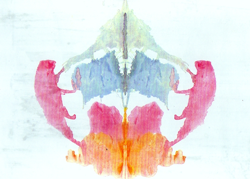The aim of this blog is to highlight some of the routine problems that occur with Western blotting and suggest possible solutions. The 7 common problems are:
- Uniform High Background
- Blotchy or Speckled Background
- Weak or No Signal
- Non-Specific Bands
- Diffuse Bands
- Ghost/ Hollow Bands or Brown/ Yellow Bands on Membrane
- Blank Areas
1. Uniform High Background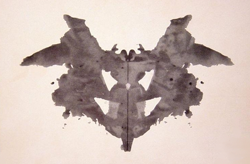
High Concentration of Antibody
Reduce the concentrations of antibodies. High concentrations of antibodies will lead to a coating of the membrane with antibodies due to saturation, resulting in a uniform signal across the entire membrane. High antibody concentration may also result in the development of non-specific bands.
Interference from Incompatible Blocking Agent
Many blocking agents are protein based, and some are sera protein based, such as Bovine serum albumin. Antibodies produced in animals have an inherent problem in the fact that they can interact with animal proteins used in blocking agents. As the blocking agent is on the entire surface of the membrane then a uniform signal will be seen. The best solution is to find a non animal blocking agents, such as G-Biosciences NAP-BLOCKER. Other alternatives are protein-free blockers or non mammalian protein blockers.
Some blocking agents may actually bind to the antigen of interest and therefore prevent antibody binding and subsequent detection.
Non-Specific Sites Insufficiently Blocked
Optimization of the blocking conditions is essential for clear backgrounds. Factors to investigate are blocker tube (see above), length of incubation and temperature of incubation. The inclusion of Tween 20 at a final concentration of 0.05% can also improve blocking.
Insufficient Washing
Improper washing will result in excess antibody remaining on the blot. Increase both the volume, length and number of wash steps. For improved washing, use wash buffers with Tween 20.
Overexposure of Membrane
Simple solution: Reduce exposure times!
Poor Handling of Membrane
Membranes poorly hydrated before transfer of Western blot development. PVDF requires methanol for proper hydration. If the membrane dries out during the procedure a high background may occur. Old membranes can also severely affect the quality of your blots
Buffers Contaminated
The presence of bacteria or other contaminants will severely affect blotting. Replace old buffers.
2. Blotchy or Speckled Backgrounds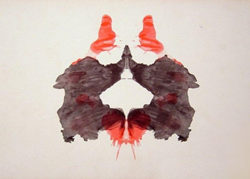
Conjugated Enzyme Antibody Conjugated
Conjugation of the secondary antibody may result in intense spots on the membrane, producing a speckled pattern. Filter the conjugate through a 0.2µm filter may resolve the issue. If not use a fresh antibody.
Dirty Equipment
The presence of contaminants on dirty equipment may result in blotchy or speckled patterns. Ensure all equipment is clean prior to use. Small gel pieces on the membrane may also cause this effect.
High Concentration of Antibody
Interference from Incompatible Blocking Agent
Non-Specific Sites Insufficiently Blocked
Insufficient Washing
Overexposure of Membrane
Poor Handling of Membrane
Buffers Contaminated
3. Weak or No Signal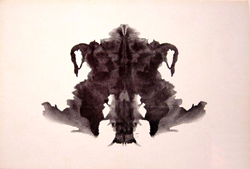
Improper Transfer or Protein
Poor protein transfer to the membrane is a routine, but often overlooked problem. If there's no protein, there will be no signal. The presence of trapped air bubbles will prevent protein transfer resulting in blank areas on the developed blot. A quick quality control step can be performed after transfer to check transfer by using a reversible stain, such as Ponceau-S or commercially available stains. SWIFT Membrane Stain is a 30 second reversible stain that offers greater user friendly attributes compared to Ponceau-S.
If after checking the membrane and poor transfer has occurred, explore other options such as a unique product from G-Biosciences that reduces transfer times, prevents overheating and aids high molecular weight protein transfer. Our Swift Transfer Pads should help.
The use of 20% methanol in transfer buffers should improve transfer. For small molecular weight proteins reduce transfer times and use membranes with smaller pore sizes.
Low levels of antigen on the membrane, as a result of poor transfer or insufficient loaded on gel, may be a cause. If possible use higher levels of antigen.
Antibody Concentrations
Too high a concentration of antibody can not only cause high backgrounds, but can also use up all the substrate before it can be detected, resulting in no or weak signal. An indication of this would be brown/yellow bands on the membrane or ghost/ hollow bands on the films.
Too low a concentration will also result in a weak or no signal. Ensure to optimize both primary and secondary antibodies.
Conjugated Enzyme Inhibited
The presence of sodium azide in buffers as a preservative to prevent bacteria and other contaminants growing can inhibit HRP and others enzymes. This will result in weak or no signal. Avoid the use of sodium azide during Western blotting.
Detection Substrates Inactive
If the substrates for Western blot detection have deteriorated weak or no signal will occur. Ensure substrates are within their shelf life and ensure no cross contamination occurs during handing of 2-3 component systems. Detection substrates can be quickly tested by preparing in a microfuge tube and adding a small amount of enzyme conjugated enzyme. For chemiluminescent reagents add in dark room to visualize the blue light.
Excessive Stripping
If a membrane has been stripped and reprobed and the signal is weaker than expected then the stripping method may be too harsh and the antigen sites have been destroyed. Use a mild stripping solution, such as Western ReProbe that requires no boiling, denaturants or SDS. Also limit the number of times a blot is stripped.
Exposure Time To Short
Expose to film for longer and ensure that the blot is exposed as soon after substrate additon as possible.
Interference from Incompatible Blocking Agent
4. Non Specific Bands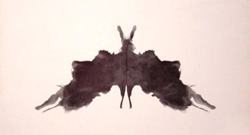
SDS Interfering with Blot
The presence of the strong, anionic detergent SDS on the membrane or in buffers can result in non specific band development caused by antibodies binding to the charged SDS molecules associated with the proteins. Ensure the blot is washed extensively after transfer and no SDS is used during Western blot development.
High Concentration of Antibody
5. Diffuse Bands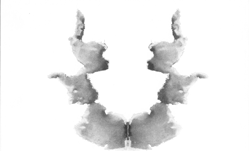
High Protein Concentration
High protein concentrations can result in diffuse protein bands after blot development. Reduce the amount of protein initially loaded.


